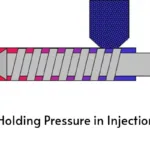12 Popular Plastic Injection Molding Materials: Properties and Selection Guide
July 19, 2024
Injection molding materials are an important factor in deciding plastic parts quality. The success of an injection molding project hinges significantly on the choice of material. Each material offers distinct advantages and limitations, making it essential to choose the most suitable one for the specific application.
In this post, we will explore the importance of selecting the right material for injection molding and delve into some of the common materials used in the process. By understanding the characteristics and applications of these materials, manufacturers can make informed decisions to optimize the performance, quality, and cost-effectiveness of their injection-molded products.
Common Injection Molding Materials
Thermoplastics
Thermoplastics are a class of polymers that soften when heated and solidify when cooled, making them highly suitable for injection molding. They exhibit excellent versatility, durability, and recyclability, making them widely used in various industries. Here are some of the most commonly used thermoplastics in injection molding:
Polyethylene (PE)
Polyethylene is the most popular and commonly used plastic in the world. It is a lightweight, ductile, and chemically resistant material with good impact strength.
Excellent chemical resistance, low moisture absorption, and good electrical insulation properties are PE material’s main characteristics.
Common applications include packaging, containers, pipes, and automotive components.
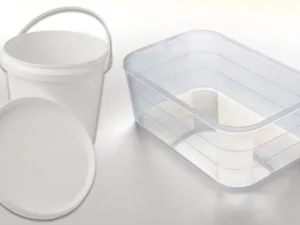
Polypropylene (PP)
Polypropylene is a lightweight and durable thermoplastic known for its high stiffness, heat resistance, and chemical resistance. PP can be easily recycled, making it an environmentally friendly choice for many applications. However, it has limitations in high-temperature applications and is susceptible to UV degradation.
It is commonly used in packaging, automotive parts, household appliances, and medical devices.
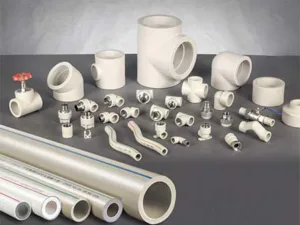
Polystyrene (PS)
Polystyrene is a versatile thermoplastic known for its clarity, rigidity, and excellent processability. PS can be easily processed through injection molding, extrusion, and thermoforming techniques.
It is commonly used in packaging, disposable cutlery, CD cases, and insulation materials.
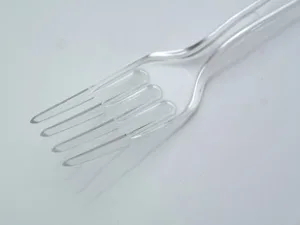
Acrylonitrile Butadiene Styrene (ABS)
ABS is a tough and impact-resistant thermoplastic known for its high strength, stiffness, heat resistance, and dimensional stability. It offers good chemical resistance and can be easily machined, painted, and welded.
ABS is widely used in automotive components, electronics housings, plastic enclosures, toys, and consumer goods.
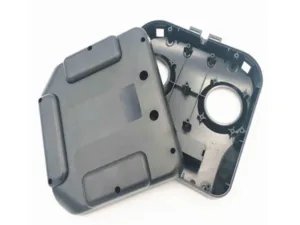
Polyvinyl Chloride (PVC)
PVC is a widely used thermoplastic known for its excellent chemical resistance, weatherability, and flame retardancy. PVC can be rigid or flexible, depending on the additives and processing techniques used.
It is commonly used in construction materials, piping, medical devices, and automotive interiors.
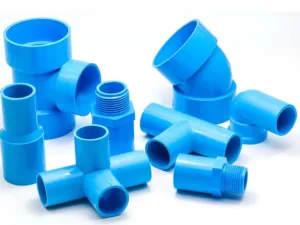
Nylon (PA)
Nylon is a family of synthetic polymers used in many commercial applications. The most common types used for injection molding are Nylon 6, Nylon 6/6, Nylon 66, and Nylon 6/66, which offer improved mechanical properties, heat resistance, and chemical resistance.
It is commonly used in engineering applications such as gears, bearings, bushings, and structural components.
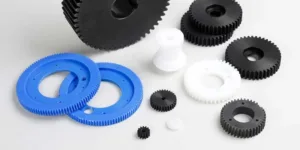
Polycarbonate (PC)
Polycarbonate is a strong, durable, and transparent material. It has good heat resistance and can be combined with flame retardants. However, it is susceptible to scratching and requires UV stability. PC can be easily processed through injection molding, extrusion, and thermoforming techniques.
It is commonly used in applications requiring impact resistance and optical clarity, such as face shields, visors, safety glasses, automotive glazing, and electronic enclosures.
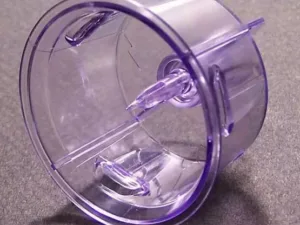
Acrylic (PMMA)
Acrylic is a strong, clear thermoplastic that allows plenty of light to pass through. It is shatter-resistant and resistant to sunlight and weather, making it suitable for applications like windows, greenhouses, and lighting.
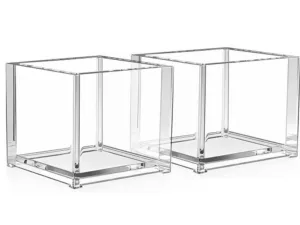
Polyethylene Terephthalate (PET)
PET is a strong and lightweight thermoplastic known for its excellent barrier properties, clarity, and recyclability. PET can be easily processed through injection molding, blow molding, and thermoforming techniques.
It is commonly used in beverage bottles, food packaging, fibers, and automotive parts.
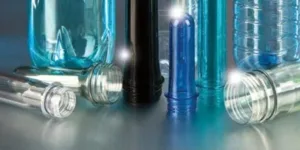
Thermosetting Plastics
Thermosetting plastics are a class of polymers that undergo a chemical reaction during the molding process, irreversibly transforming from a liquid or soft state to a hard and rigid state. Once cured, thermosetting plastics cannot be remelted or reshaped, making them ideal for applications requiring high heat resistance and dimensional stability. Here are some commonly used thermosetting plastics in injection molding:
Phenolic
Phenolic resins are synthetic polymers derived from phenol and formaldehyde, known for their excellent heat resistance, electrical insulation properties, and dimensional stability. They exhibit high strength, hardness, and chemical resistance, making them suitable for demanding applications in electrical and automotive industries.
Phenolic resins are commonly used in molded parts such as electrical switches, connectors, automotive components, and appliance handles.
Epoxy
Epoxy resins are thermosetting polymers formed through the reaction of epoxide monomers and curing agents. It is one of the most commonly used thermoset materials for injection molding. It is a low-cost resin that can be molded in many ways and is frequently used as both an adhesive and a molding compound.
They are known for their exceptional adhesive properties, mechanical strength, and chemical resistance. Epoxy resins can be reinforced with fibers such as glass, carbon, or aramid to enhance their strength and stiffness, making them ideal for structural applications.
Common applications of epoxy injection molding include aerospace components, automotive parts, electronic encapsulation, and composite materials.
Polyurethane(PU)
Polyurethane (PU) resins are versatile thermosetting polymers known for their flexibility, toughness, and abrasion resistance. They exhibit excellent mechanical properties over a wide range of temperatures. PU resins can be formulated to have varying degrees of hardness, elasticity, and chemical resistance, making them suitable for a wide range of applications.
Common applications of polyurethane injection molding include automotive bumpers, seals, gaskets, footwear, furniture, and insulation materials.
Factors to Consider When Choosing Injection Molding Materials
Mechanical Properties
Strength: The strength of a material refers to its ability to withstand applied forces without deformation or failure. High-strength materials are desirable for applications requiring structural integrity and load-bearing capabilities. Considerations include tensile strength, compressive strength, and yield strength.
Flexibility: Flexibility describes a material’s ability to bend or deform under stress without breaking. Flexible materials are suitable for applications requiring resilience, impact absorption, and vibration damping. Factors to consider include modulus of elasticity, elongation at break, and flexural modulus.
Impact resistance: Impact resistance measures a material’s ability to absorb energy and resist fracture when subjected to sudden or repetitive impacts. Impact-resistant materials are essential for applications prone to mechanical shocks or impacts. Considerations include Izod impact strength, Charpy impact strength, and notch sensitivity.
Thermal Properties
Heat resistance: Heat resistance refers to a material’s ability to withstand elevated temperatures without softening, melting, or degrading. High heat resistance is crucial for applications exposed to elevated temperatures during processing, operation, or environmental conditions. Factors to consider include heat deflection temperature (HDT), continuous service temperature, and thermal expansion coefficient.
Thermal conductivity: Thermal conductivity measures a material’s ability to conduct heat, influencing its thermal management capabilities. High thermal conductivity is desirable for applications requiring efficient heat transfer or dissipation. Factors to consider include thermal conductivity coefficient and thermal diffusivity.
Chemical Resistance
Chemical resistance refers to a material’s ability to withstand exposure to various chemicals without degradation or corrosion. Chemical-resistant materials are essential for applications exposed to harsh chemicals, solvents, or environmental conditions. Considerations include resistance to acids, bases, solvents, oils, and other chemicals.
Cost
Cost considerations encompass the material’s raw material cost, processing cost, tooling cost, and overall lifecycle cost. Balancing material cost with performance requirements is crucial for achieving cost-effective solutions.
Factors to consider include material price, processing efficiency, scrap rate, and tooling longevity.
Appearance
Appearance considerations include the material’s color, surface finish, texture, and transparency. Aesthetics plays a significant role in consumer products, branding, and marketing.
Factors to consider include pigmentation options, surface treatment techniques, and mold design features.
Environmental Impact
Environmental impact considerations encompass the material’s recyclability, biodegradability, and sustainability. Eco-friendly materials reduce environmental footprint and contribute to sustainable manufacturing practices.
Factors to consider include material recyclability, renewable sources, biobased content, and environmental certifications.
Conclusion
The selection of injection molding materials selection is important to the injection molding process, it influences product performance, durability, and environmental impact directly. As we’ve explored in this discussion, the realm of injection molding materials is rich and diverse, offering a spectrum of options ranging from traditional thermoplastics to advanced thermosetting polymers. Each material brings its own set of properties and characteristics, tailored to suit specific application needs across industries. Understanding each material’s property and application, and choosing the suitable material for your injection molding project.



